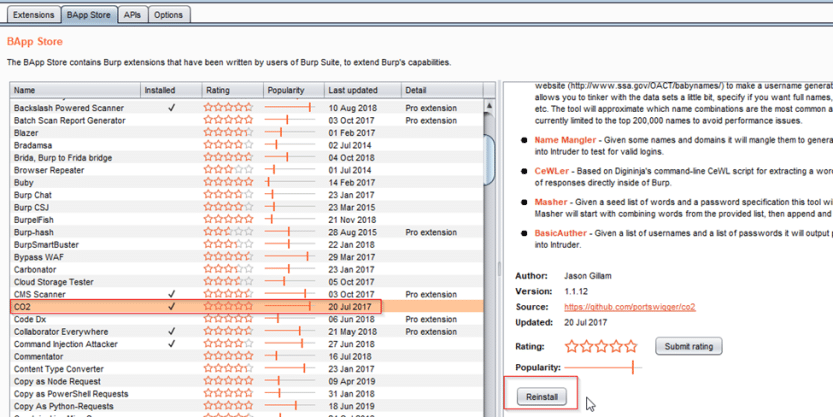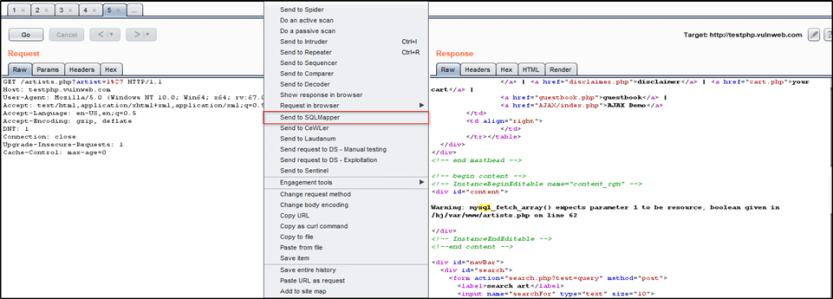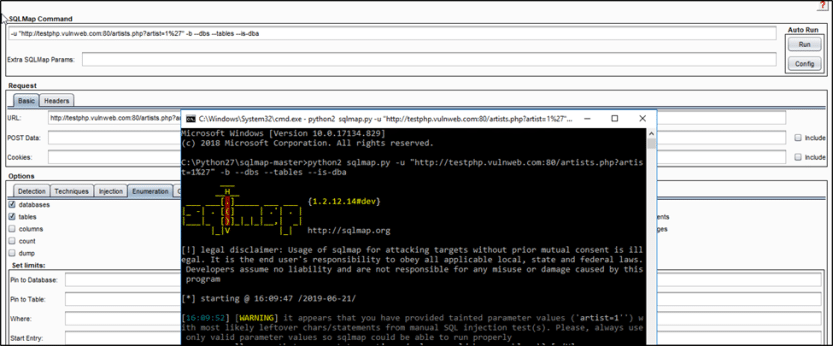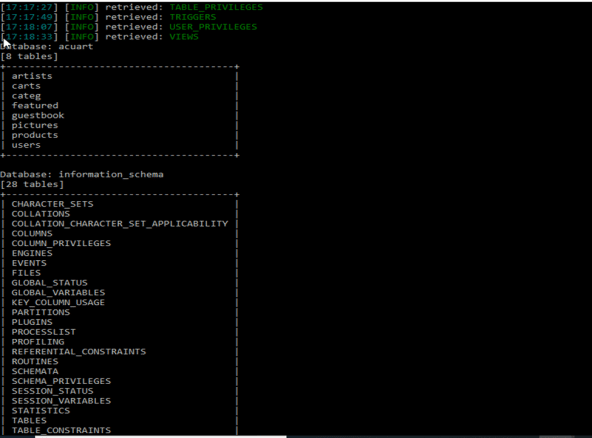Mastering SQL Injection Exploitation: A Guide to Leveraging Sqlmap and Burp CO2 Extension
Burp CO2 is a valuable addition to the renowned Burp Suite web proxy and application testing program, accessible via Portswigger. To unlock the capabilities of the CO2 extension, it is essential first to install Burp Suite. This extension is a multifaceted tool designed to enhance specific tasks within web penetration testing. It boasts features such as an interface for seamless interaction with SQLMap, minimizing errors, various tools for crafting user lists, implementing the Laudanum exploitation shell, and even a word masher for password creation.
Within the realm of CO2 extensions, we will delve into SQLMapper. In Burp, a simple right-click on any request enables submission to SQLMapper. The ensuing SQLMapper screen showcases essential details such as the URL, POST data, and cookies from the request. Users can then fine-tune settings, copy the command, and execute it in the terminal or opt for the convenient autorun feature.
This article will elucidate obtaining the sqlmap command using Burp Suite for SQL injection. Initiate Burp Suite, navigate to the Extender tag, and access the BApp Store for Burp extensions.
Next, select CO2 and install by clicking the right button on the frame. The provided screenshot reveals CO2 seamlessly integrating an extension into the menu bar. Clicking on CO2 allows for selecting the SQLMapper tool, powered by the SQLMap tool designed to exploit SQL injection vulnerabilities automatically.
Leveraging SQLMap empowers users to scan websites and databases, identifying flaws that can be exploited to gain control over the target database. However, the initial step involves identifying a susceptible website or database. SQL injection, arising from lax input validation controls, exposes a vulnerability in applications. Malicious actors can exploit this to execute arbitrary SQL code, potentially revealing stored data and, in severe cases, obtaining full access to the application server hosting.
Burp Suite offers a trio of primary methods to detect SQL injections: manual addition of test strings, scanner utilization, and the third, notably effective approach of employing the CO2 extension. This extension seamlessly integrates the SQLMap tool in the background, streamlining the detection and exploitation of SQL injections. The exploration will delve into these three approaches, highlighting their nuances and effectiveness.

Open burpsuit go for intercept is the button after selecting the proxy from the menu bar. Come back and click on the submit button in the application. When you click the Intercept button, the HTTP and Web Sockets messages sent between your browser and web servers are displayed.
Now, right-click on its window to bring up a list of available actions. Choose the send to SQLMapper option from the list. When the retrieved data is submitted to the SQL mapper, the sqlmap command is automatically generated using the referrer and cookie.
The choices box at the bottom of the burp suite frame is visible here. Then, choose the checkboxes for the database, tables, columns, users, and passwords by clicking on the enumeration tag.
The sqlmap command can now be manually executed on a terminal by copying it from the text box.
Extension offers you two possible attacking ways:
Either you copy the command which is generated by clicking on the options available and paste this into the command line, or
you run the command directly from the GUI.
As the screenshot indicates, open the terminal and paste the above command before “sqlmap.” Now execute this command to retrieve database information.
How to create a sqlmap command using a burp suit for SQL injection is evident. You can now see it spew the previous image’s data.
Integrating Burp CO2 into the Burp Suite elevates web penetration testing to new heights, offering a comprehensive suite of tools to enhance efficiency and accuracy. From facilitating seamless interactions with SQLMap to providing an array of utilities for various tasks, Burp CO2 emerges as a valuable asset in the arsenal of cybersecurity professionals.
As we navigated through the exploration of CO2 extensions, our focus on SQLMapper unveiled a user-friendly approach within Burp. The simplicity of right-clicking on requests to submit them to SQLMapper streamlines the process, empowering users to fine-tune settings and execute commands effortlessly.
The initiation within Burp Suite, installation of CO2 via the BApp Store, and seamless integration into the menu bar exemplify the user-friendly nature of this powerful extension. The SQLMapper tool, fueled by SQLMap, stands out as an automated solution for exploiting SQL injection vulnerabilities.
Understanding the significance of identifying susceptible websites or databases, we delved into the underlying threat of SQL injection from lax input validation controls in applications. The potential exploitation allows malicious actors to execute arbitrary SQL code, potentially compromising stored data and, in severe cases, gaining full access to the application server.
Burp Suite’s array of detection methods for SQL injections, including manual testing, scanner utilization, and the highly effective CO2 extension, emphasizes its versatility and reliability. Exploring these three approaches sheds light on their nuances, enabling users to choose the most suitable method for their specific scenarios. Generating the sqlmap command, whether for manual execution in the terminal or direct execution from the GUI, adds flexibility to the user’s toolkit.
Conclusion
The exploration has taken us through the complex realm of SQL injection exploitation, highlighting the effectiveness of Burp CO2, SQLMap, and the Burp Suite in strengthening web applications against potential vulnerabilities. As one executes the sqlmap command and observes the retrieval of database information, a path towards mastering the intricacies of SQL injection testing unfolds, equipped with potent tools and insightful techniques.
Cigniti’s Security Testing and web application penetration testing uncovers vulnerabilities in applications, ensures your application risks are minimized, and benchmarks your software code for increased quality assurance. Our Security Testing services across different industry verticals and enterprises ensure their cyber-safety, leading to robust brand image & client retention.
Need help? Contact our Security Testing experts to learn more about mastering SQL Injection exploitation.










Leave a Reply